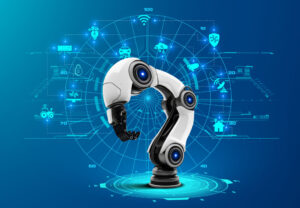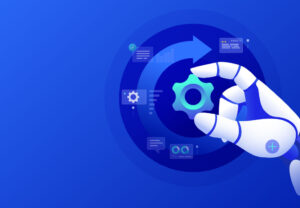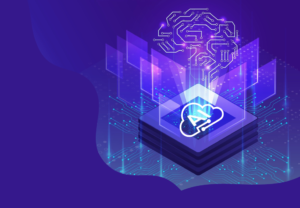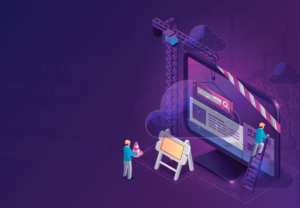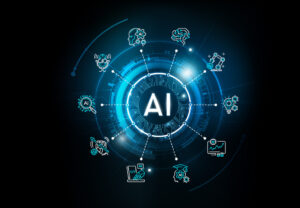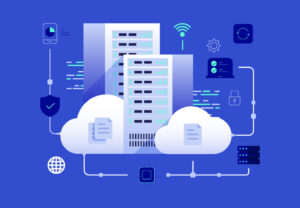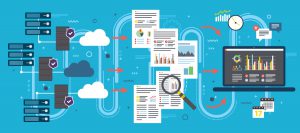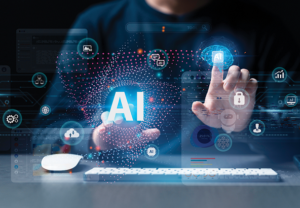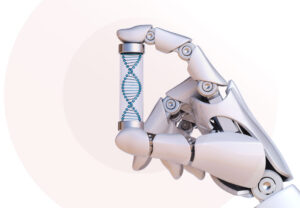Agentic AI and Hyperautomation: A New Framework for Operational Excellence
“Agentic AI for enterprise process optimisation represents a fundamental shift from reactive automation to proactive intelligence. Multi-agent systems for business process automation enable end-to-end workflow management whilst Agentic AI governance frameworks ensure controlled deployment. The future of work with agentic automation, for example, encompasses autonomous AI in financial services compliance, Agentic AI use cases in manufacturing, and human-on-the-loop automation strategies. Measuring ROI of agentic AI implementation remains critical despite challenges of deploying agentic AI at scale, particularly regarding benefits of Agentic AI in supply chain operations.”
Enterprise automation programmes have achieved remarkable efficiency gains over the past decade, yet persistent challenges continue to constrain their transformational potential. Even the most sophisticated automation initiatives struggle with exception handling, unstructured data processing, and adaptation to dynamically changing operational environments. Traditional automation tools, particularly Robotic Process Automation (RPA), remain fundamentally rules-based and brittle, requiring extensive human intervention when encountering scenarios outside their predefined parameters.
The emergence of hyperautomation promised a more comprehensive approach, orchestrating multiple technologies including artificial intelligence, machine learning, process mining, and workflow management to automate broader swathes of business operations. Despite significant investments and measurable improvements in operational efficiency, hyperautomation has yet to deliver the seamless, end-to-end automation that enterprises require to achieve true operational excellence. According to a 2024 report from McKinsey, while AI adoption is now widespread, with 78% of organisations using AI in at least one business function, a significant value gap remains. The report reveals that over 80% of these organisations have yet to see a tangible impact on their enterprise-level earnings from their use of AI. [6] [7]
The missing component has been genuine autonomous intelligence capable of reasoning, planning, and executing actions without constant human oversight. Agentic AI, with its capacity for autonomous decision-making and adaptive behaviour, now provides the critical element that can transform hyperautomation from an aspiration into operational reality. This new paradigm offers enterprises a framework for achieving unprecedented levels of operational excellence through truly intelligent automation.
The Current State of Hyperautomation: A Foundation for Advancement
Hyperautomation represents the strategic orchestration of multiple automation technologies to create comprehensive, integrated automation ecosystems. This approach combines artificial intelligence, machine learning, robotic process automation, smart workflow management, process mining, task mining, and intelligent business process management to fully automate business processes.
The early successes of hyperautomation shows a strong promise of substantial cost reductions, improved processing speeds, and enhanced accuracy across numerous operational domains. Financial services institutions have automated loan processing workflows, manufacturing companies have optimised production scheduling, and supply chain operations have benefited from intelligent demand forecasting and inventory management. These achievements demonstrate hyperautomation’s capacity to streamline complex, multi-step processes whilst reducing human error and reducing operational costs.
Journey towards hyperautomation remains heavily dependent on human intervention for complex decision-making scenarios. Processes involving unstructured data sources, such as contracts, emails, and regulatory documents, continue to require human interpretation and judgement. The automation of end-to-end processes that span multiple systems and departments remains fragmented, with handoffs and exceptions disrupting the seamless flow that true automation requires.
The central challenge lies in hyperautomation’s lack of genuine autonomous intelligence. Whilst these systems excel at executing predefined workflows and applying learned patterns to similar scenarios, they cannot adapt to novel situations, reason through complex problems, or make autonomous decisions that extend beyond their training parameters. This limitation has created a ceiling for hyperautomation’s effectiveness, preventing organisations from achieving the comprehensive operational transformation they seek.
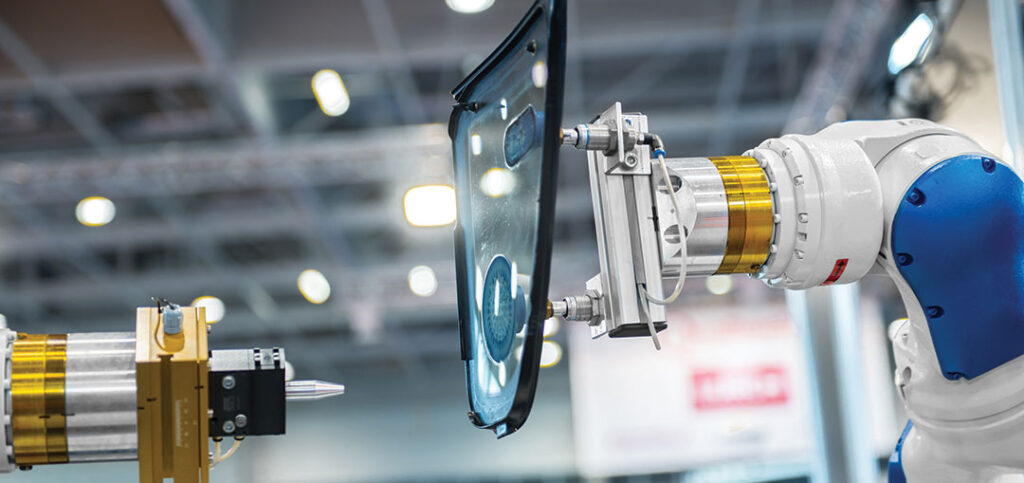
The Advent of Agentic AI: From Instruction-Takers to Decision-Makers
Agentic AI represents a fundamental departure from traditional artificial intelligence applications. Unlike generative AI, which produces insights and recommendations for human consumption, Agentic AI takes autonomous action within defined operational parameters. This distinction is crucial for understanding its transformational potential in enterprise environments.
The business world is taking note of agentic technology’s potential, catalysing significant investment. Market projections from Dimension Market Research show the global Agentic AI market is forecast to expand dramatically, from an estimated USD 7.4 billion in 2025 to over USD 171 billion by 2034, reflecting a compound annual growth rate (CAGR) of over 41%. [8]
Agentic AI systems possess four core architectural components that enable their autonomous capabilities:
- a) Planning and Reasoning: These systems formulate multi-step strategies for achieving defined objectives, considering multiple variables and potential outcomes across complex operational scenarios.
- b) Tool Use: Advanced functionality enables seamless interaction with existing enterprise systems, APIs, and databases, allowing Agentic AI to execute actions across diverse technological environments.
- c) Memory Systems: Both short-term and long-term memory capabilities provide contextual awareness and learning mechanisms that inform future decision-making and optimise performance over time.
- d) Comprehensive Guardrails: Built-in safety mechanisms ensure reliable operation within predetermined boundaries, maintaining compliance and risk management standards throughout autonomous operations.
The current reality of Agentic AI implementation reflects what industry analysts characterise as “guided autonomy” rather than unconstrained artificial intelligence. This pragmatic perspective acknowledges that whilst Agentic AI systems can operate with significant independence, they function within carefully defined parameters and oversight mechanisms. This controlled approach enables organisations to capture substantial value whilst maintaining appropriate risk management and compliance standards.
Contemporary Agentic AI implementations demonstrate sophisticated capabilities in processing natural language instructions, interpreting complex data sets, and executing multi-step workflows that previously required human intervention. These systems can adapt to changing conditions, learn from operational experiences, and optimise their performance over time. However, they operate within governance frameworks that ensure alignment with organisational objectives and regulatory requirements.
The evolution from instruction-taking automation to decision-making intelligence represents a qualitative shift in enterprise technology capabilities. Traditional automation systems execute predefined scripts and workflows, whilst Agentic AI systems reason through problems, develop solutions, and implement those solutions autonomously. This transformation enables organisations to automate processes that were previously considered too complex or variable for traditional automation technologies.
Agentic AI is the Missing Component in the Hyperautomation Framework
Agentic AI directly addresses the fundamental limitations that have constrained hyperautomation effectiveness. Its autonomous reasoning capabilities enable end-to-end process automation across previously fragmented workflows, creating seamless operational continuity that eliminates human handoffs and intervention points.
In supply chain management, benefits of Agentic AI become evident through comprehensive workflow automation that encompasses:
- a) Real-time Monitoring: Continuous surveillance of global supply chain conditions, identifying potential disruptions through analysis of weather patterns, geopolitical events, and supplier communications.
- b) Dynamic Sourcing: Autonomous evaluation of alternative sourcing options and initiation of negotiations with backup suppliers based on cost, quality, and delivery parameters.
- c) System Integration: Seamless updates to enterprise resource planning systems and automated communication of changes to relevant stakeholders across the organisation.
This end-to-end process execution eliminates the delays and errors associated with human coordination whilst ensuring optimal decision-making based on real-time data analysis.
Agentic AI use cases in manufacturing demonstrate similar comprehensive automation capabilities through:
- a) Production Planning: Autonomous analysis of demand forecasts, assessment of equipment capacity and maintenance schedules, and optimisation of material sourcing requirements.
- b) Quality Coordination: Seamless integration with quality assurance processes and dynamic adjustment of production schedules based on changing operational conditions.
- c) Responsive Operations: Real-time response to equipment failures, supply shortages, or demand fluctuations without human intervention, maintaining operational efficiency and minimising disruption.
These systems maintain continuous oversight of manufacturing operations whilst adapting to changing conditions and optimising performance across multiple variables simultaneously.
The handling of unstructured data represents another critical advancement. Agentic AI systems can process contracts, correspondence, regulatory documents, and technical specifications to extract relevant information, identify compliance requirements, and trigger appropriate actions. In financial services, autonomous AI in financial services compliance can review transaction patterns, analyse regulatory communications, assess risk indicators, and implement compliance measures whilst maintaining audit trails and documentation standards.
Multi-agent systems for business process automation extend these capabilities across entire organisational ecosystems. Multiple Agentic AI systems can collaborate on complex projects, sharing information and coordinating actions to achieve common objectives. These systems can specialise in different functional areas whilst working together to optimise overall performance.
Dynamic and adaptive operations become possible when Agentic AI systems can respond to real-time events and changing conditions. Rather than following static, predefined workflows, these systems can adjust their behaviour based on circumstances, optimising performance and maintaining effectiveness in volatile environments. This adaptability is particularly valuable in sectors such as logistics, energy management, and financial trading, where conditions change rapidly and optimal responses require immediate action.
A New Framework for Operational Excellence
The integration of Agentic AI into hyperautomation strategies creates opportunities that extend far beyond incremental efficiency improvements. This new framework enables fundamental transformation in operational excellence through three key dimensions:
- a) Enhanced Agility: Organisations can respond to disruptions more rapidly, capitalise on emerging opportunities, and maintain competitive advantage in dynamic environments through Agentic AI’s capacity to adapt quickly to changing market conditions, regulatory requirements, and operational challenges.
- b) Superior Decision-Making: These systems process vast amounts of data, consider multiple variables simultaneously, and apply sophisticated analytical techniques to complex problems, identifying patterns and opportunities that human analysts might miss whilst maintaining consistency and objectivity.
- c) Increased Organisational Resilience: Continuous monitoring and proactive response capabilities enable identification of potential problems before they become critical, implementation of preventive measures, and maintenance of operations during disruptions.
The future of work with agentic automation encompasses not just task automation but strategic adaptation and innovation across all operational domains.
A 2024 Total Economic Impact™ study by Forrester Consulting, examining an integrated intelligent automation platform, found that a composite organisation achieved a 330% return on investment (ROI) over three years. Furthermore, this strategic approach to automation generated incremental revenue growth of 5.4% CAGR, directly linking advanced, cohesive automation to top-and-bottom-line results. [9]
Successful implementation requires strong leadership commitment and strategic vision. Adopting Agentic AI represents a fundamental business transformation rather than a technology implementation project. Leaders must articulate clear objectives for Agentic AI deployment, establish appropriate governance frameworks, and commit to the organisational changes necessary for successful integration.
Human-on-the-loop automation strategies ensure that Agentic AI systems enhance rather than replace human capabilities. These approaches maintain human oversight for critical decisions whilst allowing autonomous operation for routine tasks. This balance optimises both efficiency and control, ensuring that organisations capture Agentic AI benefits whilst maintaining appropriate human involvement in strategic decisions.
Challenges of deploying agentic AI at scale include integration complexity, skills requirements, change management, and regulatory compliance. Successful organisations address these challenges through comprehensive planning, stakeholder engagement, and iterative improvement processes.

Conclusion
The convergence of Agentic AI and hyperautomation represents a transformational opportunity for enterprise operations. Traditional automation approaches, whilst valuable, have reached their effectiveness ceiling due to their inability to handle complexity, adapt to change, and make autonomous decisions. Agentic AI provides the intelligent foundation that hyperautomation requires to achieve its full potential.
The unique capabilities of Agentic AI in autonomous reasoning, multi-step planning, and adaptive response enable comprehensive process automation that was previously impossible. These capabilities address the fundamental limitations of current automation technologies whilst opening new possibilities for operational excellence.
Motherson Technology Services leverages these emerging trends to help organisations achieve sustainable competitive advantage through intelligent automation implementation. By combining deep industry expertise with cutting-edge Agentic AI capabilities, companies can transform their operations whilst maintaining the governance and control necessary for regulated environments.
The future of competitive advantage will be determined by how effectively organisations integrate Agentic AI into their operational frameworks. Leaders who act now to understand, evaluate, and implement these technologies will position their organisations for success in an increasingly automated and intelligent business environment. The question is not whether Agentic AI will transform enterprise operations, but how quickly organisations can adapt to capitalise on its transformational potential.
References
[1] https://www.ey.com/en_in/insights/ai/agentic-ai-the-next-frontier-in-automation
[2] https://www.everestgrp.com/blog/agentic-ai-true-autonomy-or-task-based-hyperautomation.html
[3] https://www.vuram.com/article/10-game-changing-ai-and-hyperautomation-trends/
[4] https://dimensionmarketresearch.com/report/agentic-ai-market/
[5] https://kanerika.com/blogs/agentic-automation/
[6] https://www.mckinsey.com/capabilities/quantumblack/our-insights/the-state-of-ai
[7] https://pmwares.com/the-state-of-generative-ai-report-by-mckinsey-summary-insights/
[8] https://dimensionmarketresearch.com/report/agentic-ai-market/
[9] https://www.blueprism.com/resources/analyst-reports/forrester-tei-2024/
About the Author:

Rajen Ghosh is a strategy and digital transformation leader with 20+ years of experience in the IT Industry working across the Americas, Europe, and the Middle East. He comes with deep expertise in creating and executing business strategy, solving complex business challenges, building high-performing teams, and overseeing complex technology-led transformation programmes. He has helped many organizations across pharmaceutical, manufacturing, financial services, and FMCG industry sectors to adopt a data-first and AI-first operating model. He is a vivid speaker and AI enthusiast who loves to speak on technology transformation and artificial intelligence in industry forums as well as with the analyst & advisor community.

 June 30, 2025
June 30, 2025 Rajen Ghosh
Rajen Ghosh



